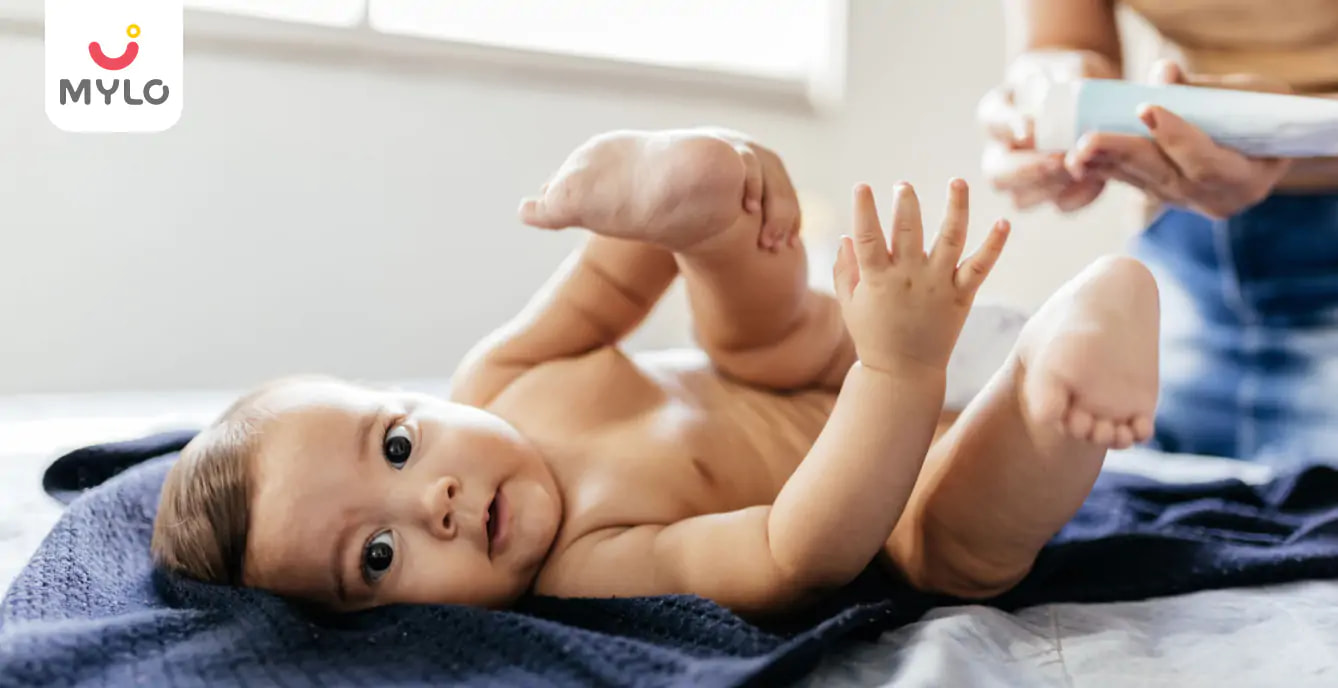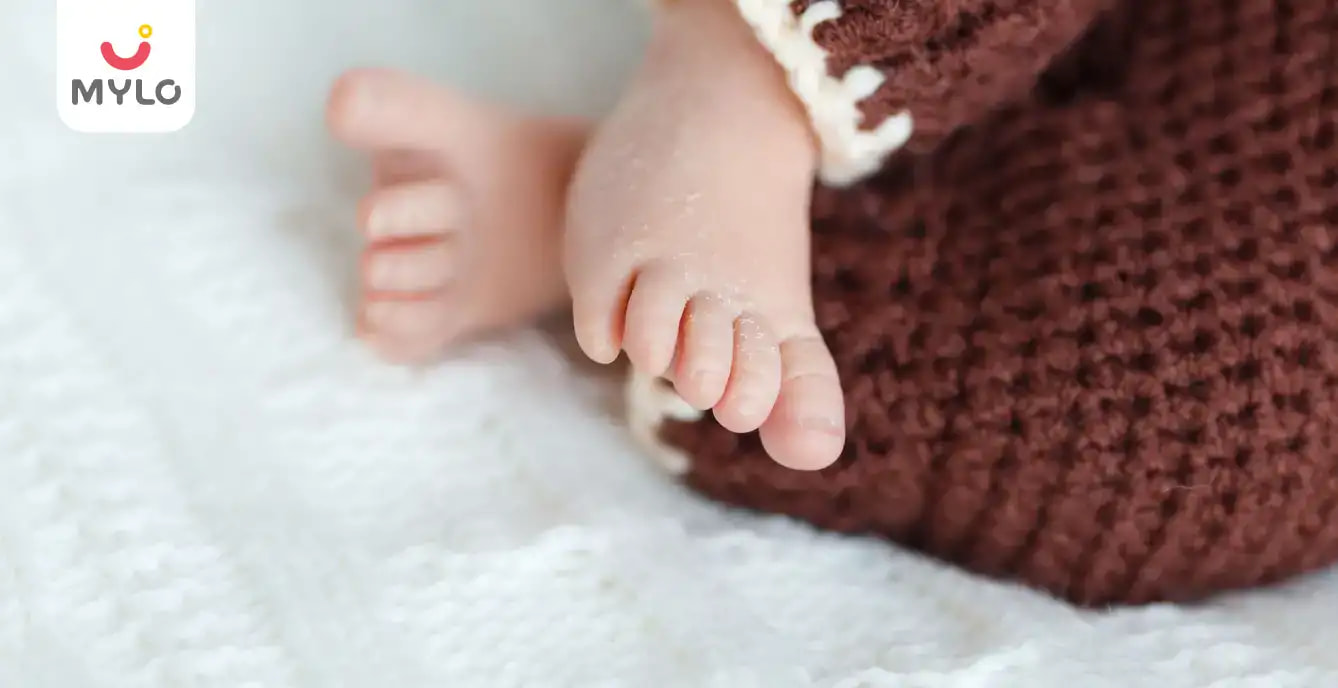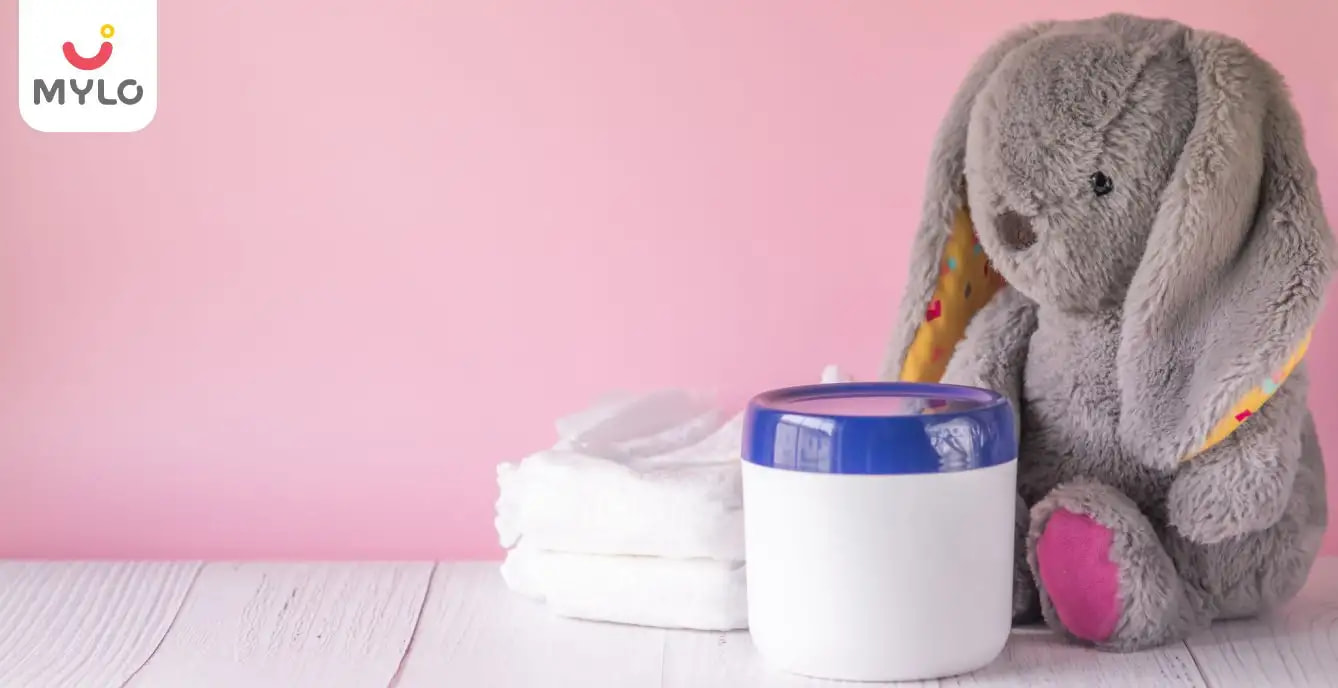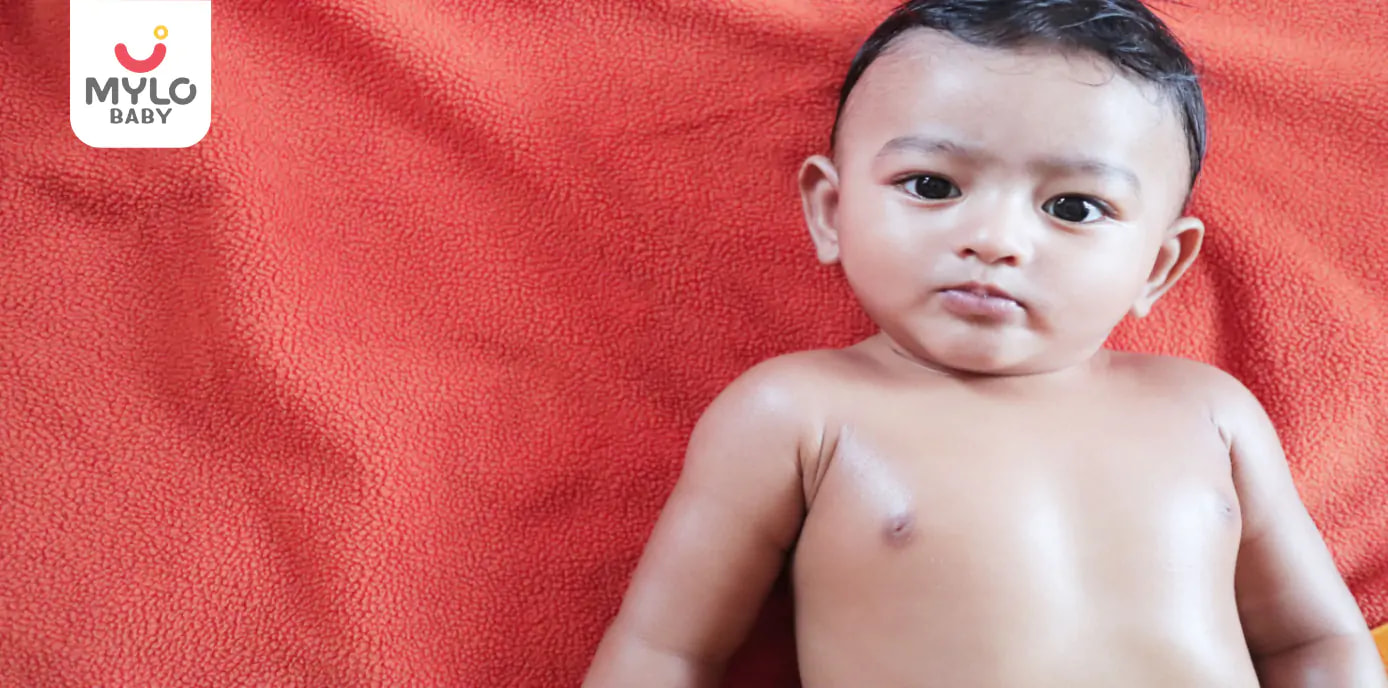Home

Illnesses & Infections

Heat Rash in Babies: Symptoms, Risks & Treatments
In this Article
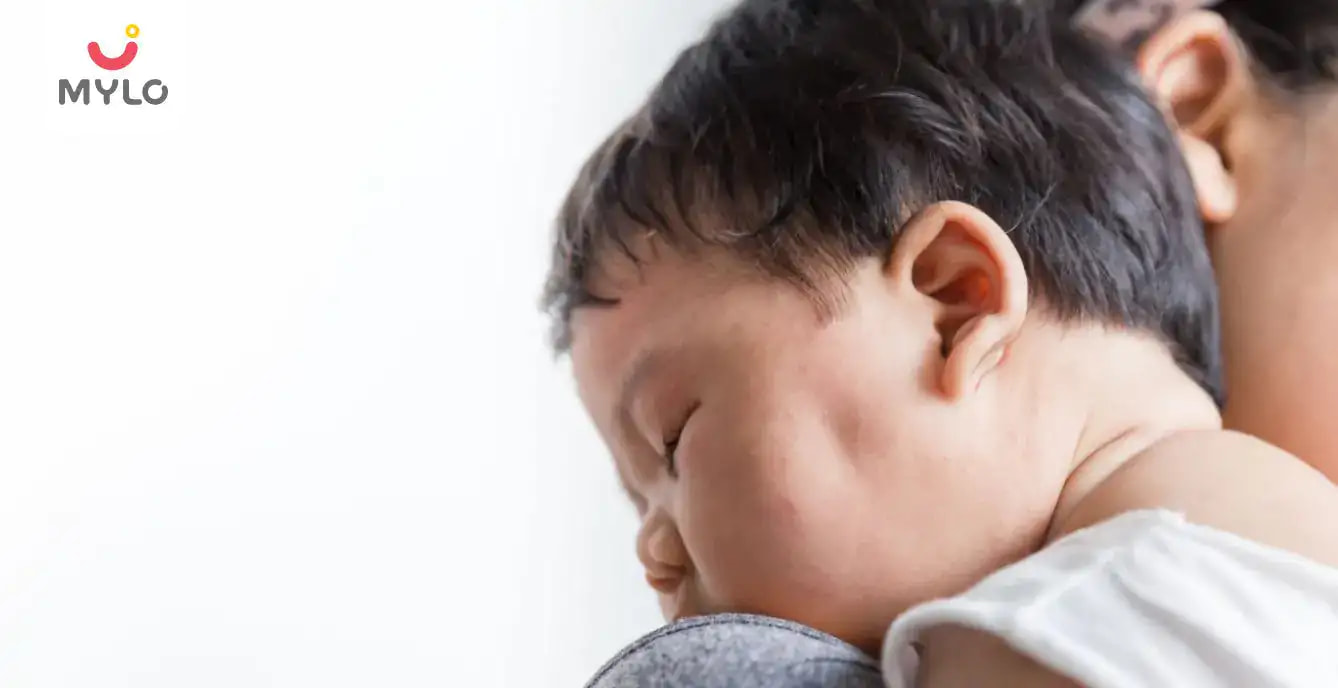
Illnesses & Infections
Heat Rash in Babies: Symptoms, Risks & Treatments
Updated on 24 March 2023
A heat rash in babies can appear suddenly and look frightening but is usually not a cause for concern. Babies have delicate skin and are more vulnerable to get a rash than adults. Heat rashes in babies can feel itchy, prickly and uncomfortable. In this article, we will discuss the different types of heat rashes in babies, their symptoms, causes, treatment and prevention.
Different types of heat rash
A heat rash or miliaria tends to occur when the skin traps sweat, which irritates the outer layer and causes a rash. Doctors divide heat rash in babies in three types depending on their severity.
1. Miliaria Rubra
Miliaria rubra or prickly heat is among the most common types of heat rashes in babies and usually affects newborns. It occurs when there is a blockage in the sweat glands close to the surface of the skin and the layer underneath the tissue.
The symptoms of miliaria rubra include small, red bumps or blisters on the skin, redness and itching. If a baby has miliaria rubra, then he/she may constantly scratch their skin. If the rash develops pus, it is called miliaria pustulosa, which may indicate a bacterial infection.
2. Miliaria Crystallina
Miliaria crystallina is a common type of heat rash in babies, especially newborns aged 2 weeks or under. It occurs when there is a blockage in the sweat glands and is the least severe form of heat rash.
The symptoms of miliaria crystallina include small clear or white blisters similar to water droplets, which are usually not red or inflamed. This type of heat rash in babies usually resolves within a day as soon as the affected layer of skin rubs off.
3. Miliaria Profunda
Miliaria profunda, although an uncommon type of heat rash in babies, is the most severe of them all. It occurs when sweat repeatedly enters the dermis, which caused intense flushing and burning. Babies with severe miliaria profunda may also develop some signs of heat exhaustion because their blocked sweat glands stop producing sweat to cool down the body.
The symptoms of miliaria profunda include large and firm flesh-coloured spots resembling pimples and mild to intense itching. If a baby scratches their rash, it may turn into an infection.
Symptoms of heat rash in babies
The main and only symptom of heat rash in babies is a rash on parts of their body that have been exposed to heat. Warm clothes, swaddling, poor ventilation and being close to heat surfaces can increase their risk of a heat rash. Additionally, heat rashes in babies are more likely to appear in skin folds in the neck or groin.
Diagnosis of heat rash in babies
The signs and symptoms of heat rash in babies are obvious, especially in the hot season. However, if you are unsure whether it is a heat rash, you can consult a doctor or pediatrician. A doctor will be able to diagnose the heat rash by examining the skin and judging from the appearance of the rash.
If the baby has a heat rash along with a fever or seems sick, then it may be a sign of an infection. In such a case, you must consult the doctor for a proper diagnosis and treatment. The doctor may also prescribe some antibiotics to clear up the infection.
You may also like to read : Types Of Diaper Rash: Causes & Treatment
Treatments for heat rash in babies
Heat rashes in babies usually go away on their own within a few days and rarely require treatment. You should not use a rash cream on the skin unless it is recommended by the doctor. The doctor may prescribe a steroid cream for a severe rash or if the rash does not go away on its own.
You can try the following home remedies to soothe your baby’s discomfort and accelerate the healing:
-
Shift the baby to a cool area upon noticing the first sign of a heat rash and keep their skin cool and dry.
-
You can also apply a cool compress on the affected areas of the body.
-
Rinse away any oil or sweat on the affected area with water and gently pat dry the skin.
-
You can also allow the baby to remain naked for some time to keep their skin cool.
-
Placing your baby in an air-conditioned room or under the fan may also help cool down their skin and body temperature.
-
Make sure to keep the baby well-hydrated. This means breastfed babies should be fed on demand and older babies should have constant access to water.
Risk factors for heat rash in babies
Here are some factors that may increase the risk of developing a heat rash in babies:
-
Wearing excessively warm or thick clothes in a hot season
-
Living in a place with a very warm climate
-
Sitting close to heat sources such as heaters or heat lamps
-
Swaddling the baby, especially if the weather is warm or the baby is sweating
-
Applying thick creams or oils on the skin that may block the sweat ducts
You may also like to read : Skincare tips for Your Newborn
Prevention of heat rash in babies
To minimise the risk of heat rashes in babies, you can adopt the following strategies:
1. Dress your baby appropriately
Dressing the baby in seasonally appropriate clothing is important. Choose comfortable and airy clothing for your baby. Pure cotton clothes are more absorbent than clothes made of synthetic fibres such as nylon, polyester or rayon. Avoid swaddling the baby or keeping them in a blanket all the time, especially in warm weather.
2. Keep your baby hydrated
Make sure your baby gets enough to drink to replace all the fluids they might be losing through sweat. To prevent dehydration, offer your exclusively breastfed baby, more breastfeeds in summer. Breastfed babies do not need extra water in hot weather as breastmilk itself is mostly water. Babies on formula and solids can have cooled, boiled water. Make sure your child drinks plenty of fluids so they don’t get dehydrated.
3. Monitor the skin from time to time
Look for signs of excess sweating in your baby and if the baby looks flushed or is sweating, shift them to a cooler area. If you aren't sure whether they’re overheated, touch the skin. Damp-hot skin is a sign that the baby is too warm. Cool the affected areas or give your baby a tepid (lukewarm) bath or shower.
Heat rash in babies is usually not harmful. However, it can indicate a baby’s risk of overheating, which can cause serious health issues. So, make sure to keep your baby cool and comfortable. If the rash does not resolve on its own within a few days or the rash begins to spread, you should consult a doctor instantly.


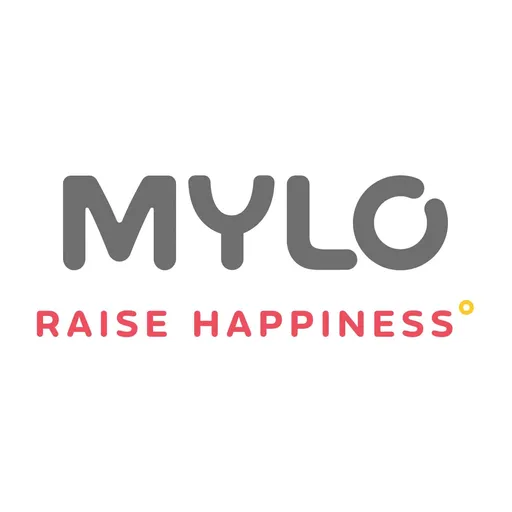
Written by
Ravish Goyal
Official account of Mylo Editor
Read MoreGet baby's diet chart, and growth tips

Related Articles
Related Questions
Hello frnds..still no pain...doctor said head fix nhi hua hai..bt vagina me pain hai aur back pain bhi... anyone having same issues??

Kon kon c chije aisi hai jo pregnancy mei gas acidity jalan karti hain... Koi btayega plz bcz mujhe aksar khane ke baad hi samagh aata hai ki is chij se gas acidity jalan ho gyi hai. Please share your knowledge

I am 13 week pregnancy. Anyone having Storione-xt tablet. It better to have morning or night ???

Hlo to be moms....i hv a query...in my 9.5 wk i feel body joint pain like in ankle, knee, wrist, shoulder, toes....pain intensity is high...i cnt sleep....what should i do pls help....cn i cosult my doc.

Influenza and boostrix injection kisiko laga hai kya 8 month pregnancy me and q lagta hai ye plz reply me

Related Topics
RECENTLY PUBLISHED ARTICLES
our most recent articles
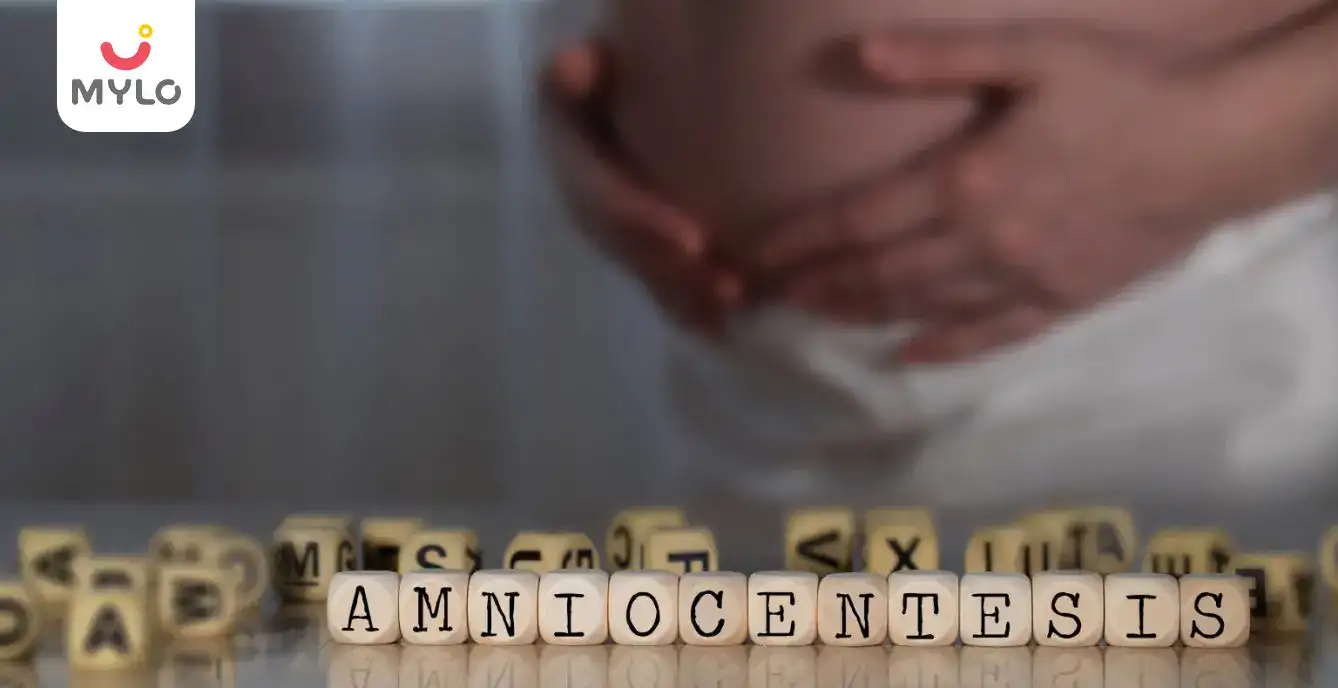
Scans & Tests
Amniocentesis: Meaning, Risks & Results
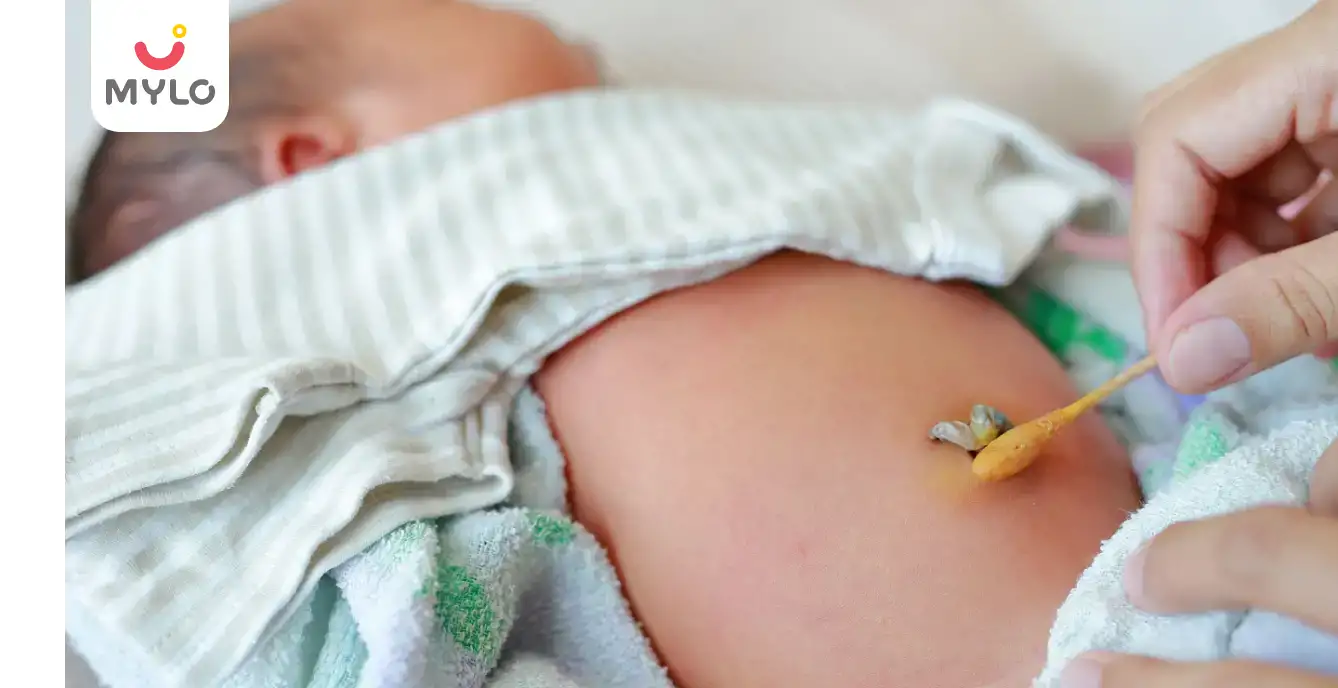
Umbilical Cord
Umbilical Cord: Risks, Benefits & Recovery
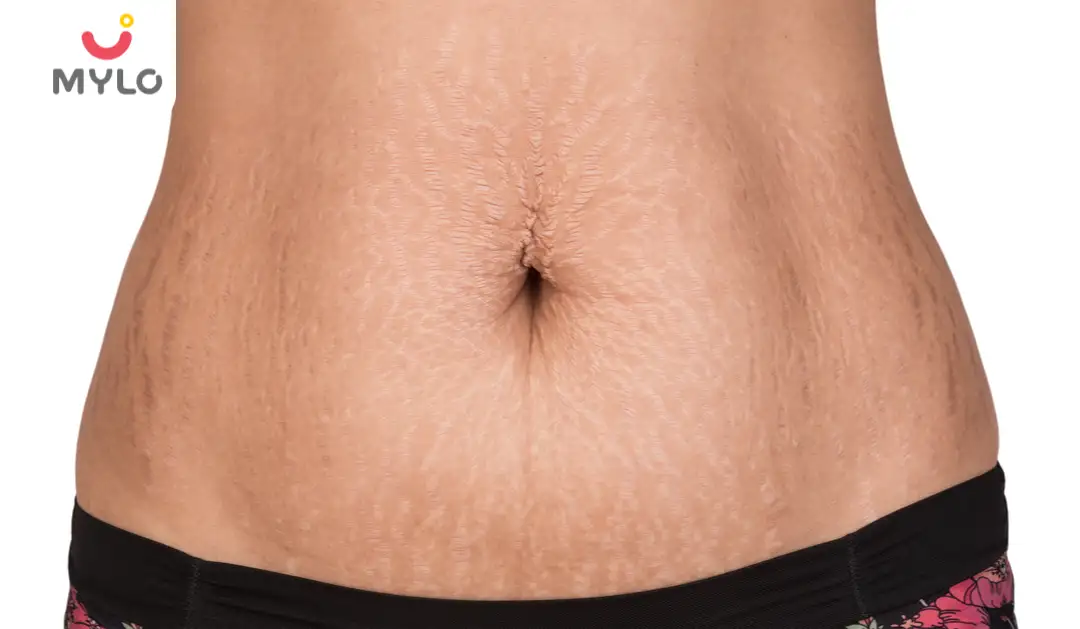
Stretch Marks
Stretch Marks Removal: Tips & Remedies
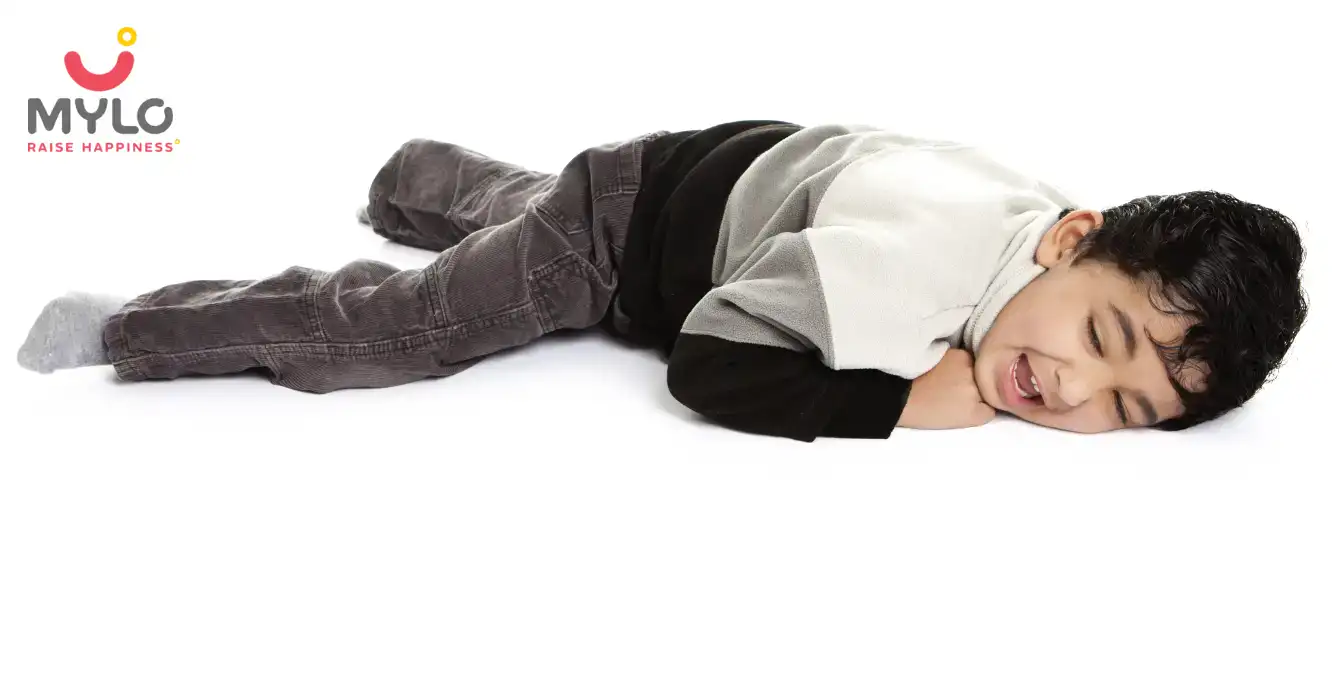
Fussy Baby
How Can Dads Calm A Fussy Toddler
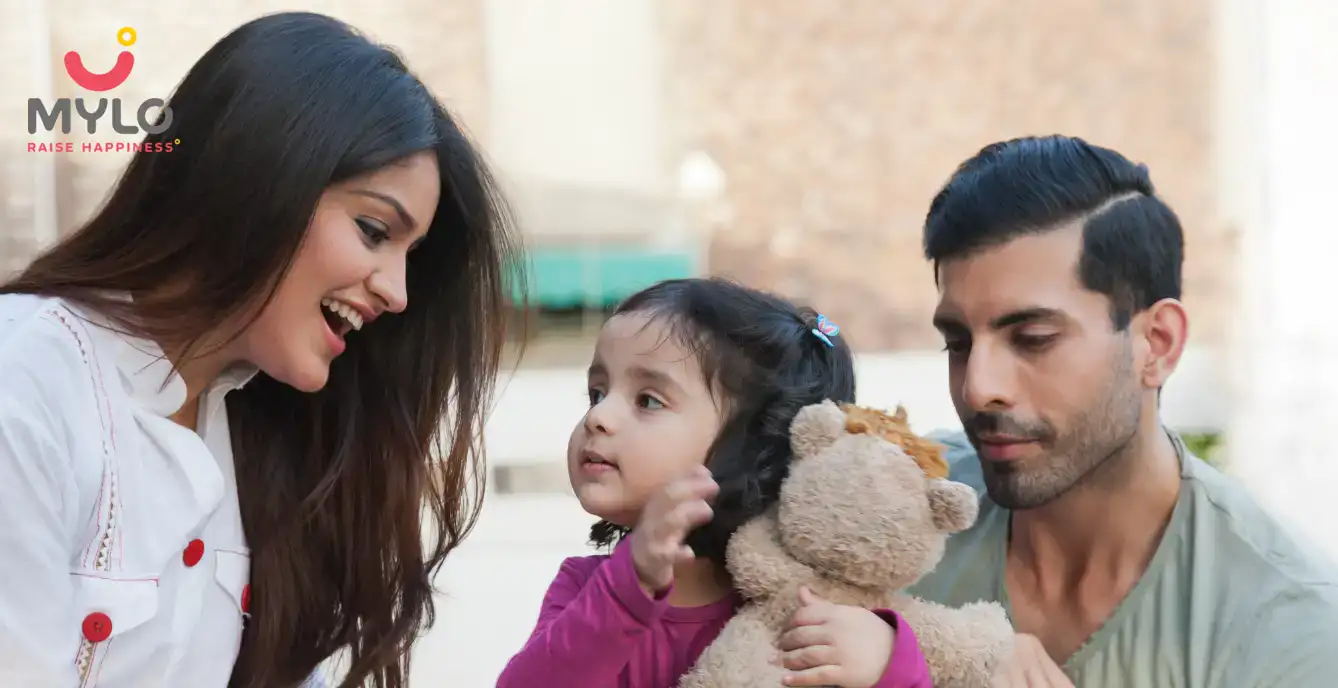
General Father
How to prepare your older child for a new baby
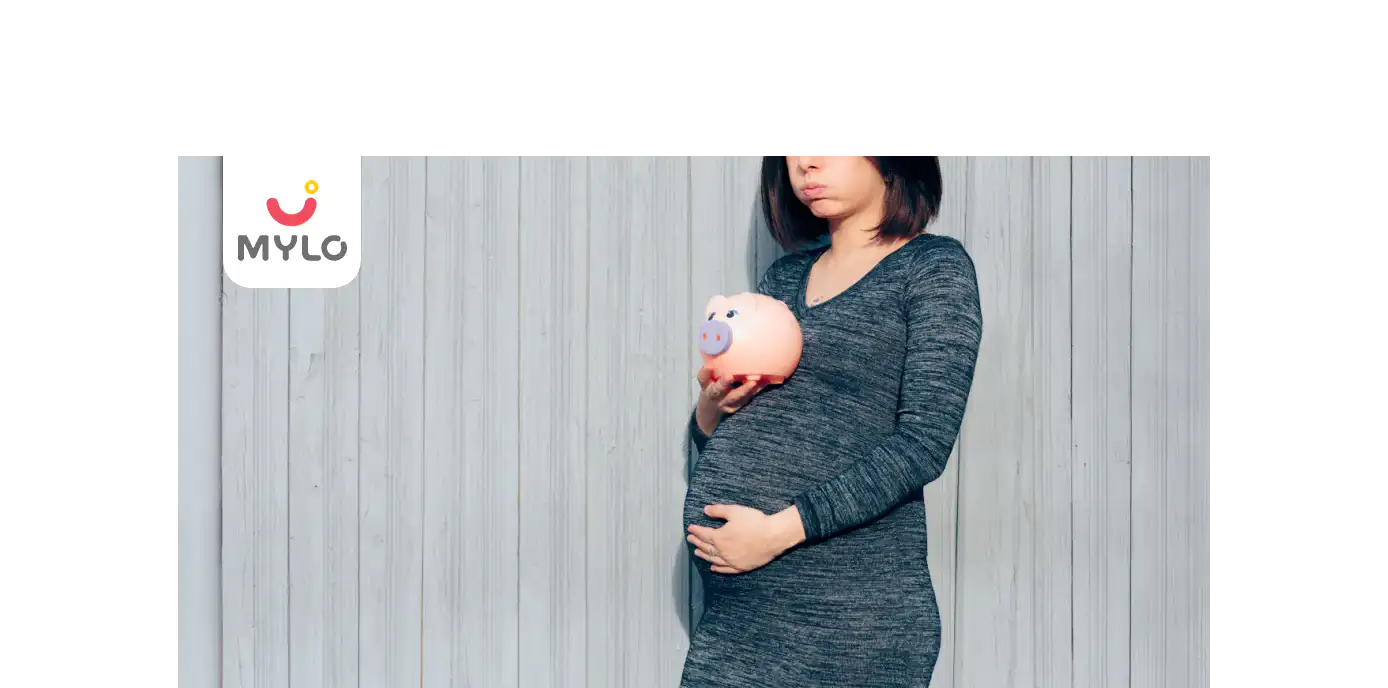
General Father
5 Financial Moves You Must Make Before Your Baby Arrives
- Daddy-Baby bonding from Pregnancy to Childbirth: Top 7 tips for you
- How to prepare your child for pre-school
- I am pregnant, can I still breastfeed my toddler?
- My toddler has bad breath. what should I do?
- When will my toddler learn how to scribble or draw?
- Can loud volume affect my toddler's ears?
- Running & Jumping Milestones for your toddler
- Activities to keep an active toddler occupied at home
- Girls' growth chart: 24 to 36 months
- What to do if your toddler is overweight?
- Electric toothbrush for Toddlers: Is it safe?
- Teaching good eating habits to your kids
- How to Introduce Books to Your Child?
- This is how you can talk to your child about strangers


AWARDS AND RECOGNITION

Mylo wins Forbes D2C Disruptor award

Mylo wins The Economic Times Promising Brands 2022
AS SEEN IN
















- Mylo Care: Effective and science-backed personal care and wellness solutions for a joyful you.
- Mylo Baby: Science-backed, gentle and effective personal care & hygiene range for your little one.
- Mylo Community: Trusted and empathetic community of 10mn+ parents and experts.
Product Categories
baby carrier | baby soap | baby wipes | stretch marks cream | baby cream | baby shampoo | baby massage oil | baby hair oil | stretch marks oil | baby body wash | baby powder | baby lotion | diaper rash cream | newborn diapers | teether | baby kajal | baby diapers | cloth diapers |



